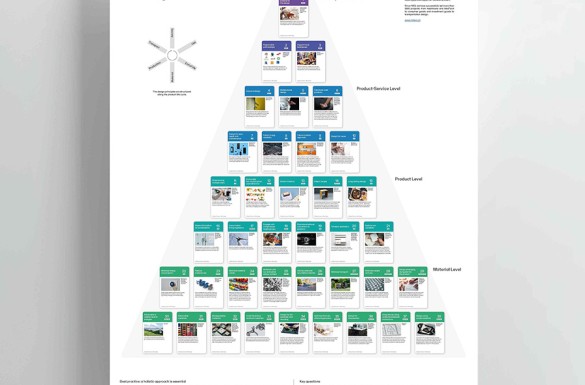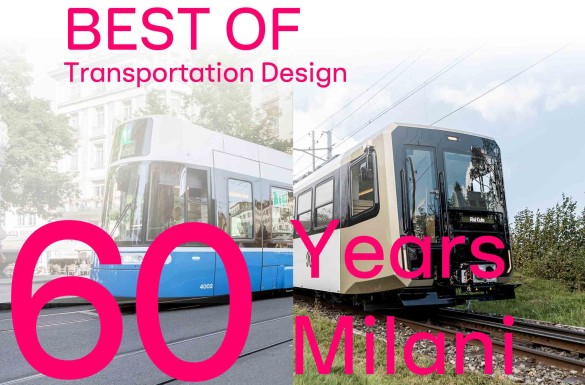REALITY CHECK - Part 1
How Design Students are Shaping the Future of Train Travel with Milani
How do you convince commuters to switch from cars to trains? This was the challenge tackled by design students from FHNW as they immersed themselves in the real-world agency environment. Commissioned by Swiss railway company Schweizerische Südostbahn AG (SOB), they spent a semester under the guidance of Milani Design & Consulting developing creative solutions for the mobility of tomorrow.
Creativity Meets Reality: A Hands-On Project with Real Impact
At Milani, we believe in the power of collaboration – which is why we actively support interdisciplinary projects. Last fall, we guided Industrial Design Bachelor students from the Basel Academy of Art and Design FHNW through the REALITY CHECK project. Their mission? To develop innovative design and service concepts for the SOB.
Led by Therese Naef, CEO of Milani, alongside Professors Werner Baumhakl and Nicole Schneider, the students gained firsthand experience of how design processes unfold in the business world: How do you create viable concepts? What makes for a successful collaboration with clients? And how do you present ideas in a compelling way?
Drawing from years of experience in transportation design, Milani guided students through the entire process.
The open-ended modalsplit question was intentional. Therese Naef explains: «Designers must learn to navigate the uncertainty that comes when clients don’t yet know exactly what they want or need.»
For Professor Werner Baumhakl, this was a key learning moment: «This project shows students how exciting the design profession is while also preparing them for real-world practice.»


New Ideas for the Mobility Transition: From Analysis to Design Solution
Working in six teams, students analyzed the modalsplit in Switzerland and explored the future travel and work needsof commuters, with a focus on first-class travel. Key questions included: How can travel time be used productively for work? What innovative mobility services can a premium transport brand like SOB offer?
The result: Six exciting concepts designed to attract drivers to the train – ranging from innovative seat designs and flexible spatial layouts to new service offerings and enhanced travel experiences for commuters and tourists.
Using user studies and prototype testing, the concepts were refined into realistic design solutions.
This project was also highly valuable for SOB. Urs Brütsch sums it up: «Each project is impressive –innovative, bold, and unafraid of existing norms. These ideas provide valuable inspiration for the future of mobility innovation.»
Explore below the first three projects!
The next set of exciting concepts awaits you in Part 2 of our blog series.
Project 1
MySOB App – An Interactive Travel Experience
The MySOB app turns every train journey into a unique experience – with personalization and exclusive benefits.
Frequent travelers can take advantage of a loyalty program that awards points for each trip. These can be redeemed with regional partners or directly within the app.
Another highlight: The augmented reality feature brings landmarks along the route to life in a completely new way. Through their smartphones, passengers can learn about the history, culture, and nature of the region – right from their train window.
For those who love to share their experiences, the community section offers a platform for exchange. Here, users can share their favorite places and personal discoveries with others.
Sustainability is also along for the ride: With the CO₂-Hero feature, passengers can instantly see how much emissions they save by taking the train. This makes environmentally conscious travel not only visible but also motivating.
Developed by: Mona Hussein, Tamara Tremonte, and Pascal Lüthi


Project 2
Flowzone – The Flexible Compartment for Every Situation
Train journeys should adapt to passengers’ needs – not the other way around. Flowzone makes this possible: With movable elements, the compartment flexibly adjusts to occupancy levels, time of day, and individual preferences, transforming the train into a versatile travel companion.
In the mornings, it becomes a productive workspace with standing tables. On short trips, the space allows for conversations, while on weekends, it provides extra storage for bicycles and large luggage.
Thanks to smart folding mechanisms, train staff can effortlessly reconfigure the space. On commuter routes, standing benches convert into ergonomic workstations and disappear when no longer needed. Folding seats can be raised or lowered as needed – offering either comfortable seating or additional storage space.
Developed by: Felix Jordi and Simon Balmer


Project 3
Urban Office on Rails – Turning Travel Time into Office Time
Urban Office on Rails brings the office directly into the train, enabling commuters to use their travel time productively. The modern, attractive workspace is specifically designed to meet their needs and facilitate focused work.
The specially designed train car offers different workspaces dedicated to mobile working.
The interior layout reflects modern office structures, providing sufficient privacy for efficient work.
Train travel thus becomes a relaxed, productive alternative to driving – a setting that seamlessly blends efficiency and comfort.
Developed by: Nicolas Fehlmann and Benedict Weber







